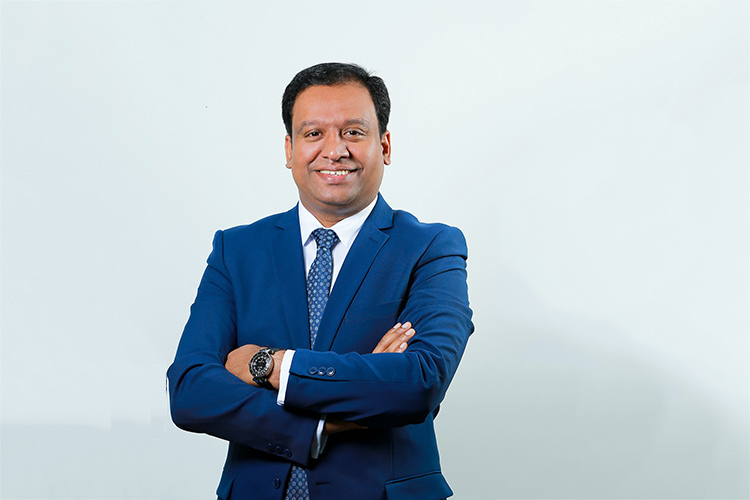

In this interview with Abey Rajan, General Manager, ENGIE Cofely Mannai, Qatar, talks about the role Qatar is playing in the renewable energy revolution.
September 21, 2022 | Staff Reporter | Abey | Energy Management

As a key player in the global energy market, Qatar can play a significant role in the rapidly advancing renewable energy revolution. Its solar exposure and available land make it possible to develop large solar PV projects or smaller distributed solar systems. Abey Rajan, General Manager, Engie Cofley Mannai, Qatar, gives us an insight into the role Qatar is playing in the renewable energy revolution.
1. Qatar has prioritized renewable energy and pledged ambitious carbon emissions goals. What can the country do to reach these goals?
As a key player in the global energy market, Qatar can play a significant role in the rapidly advancing renewable energy revolution. Its solar exposure and available land make it possible to develop large solar PV projects or smaller distributed solar systems.
Qatar can lead the region in transition to clean energy in the coming years, as envisioned in Qatar Vision 2030, where Environmental Development is one of the four key pillars.
At ENGIE, our core vision is to accelerate the transition towards a carbon-neutral economy and we do this by providing cities, communities, industries, and properties sustainable energy and service solutions.
2. What is the link between innovation and tackling climate change and environmental protection?
Due to the combined impact of a rising population, growth of the middle class, and the overall increase in the world’s greenhouse gas emissions, there is an urgent need to address climate change. Innovative technology has the power to promote different capabilities in our decarbonization efforts. Blockchain enables the transparent verification of sustainable supply and value chains and can provide reliable documentation of manufacturer data. Meanwhile, AI can reduce waste in the food industry by, for example, forecasting consumer demand more accurately or performing quality control. Drones can help to sow seeds and fertilize fields more precisely.
At ENGIE for example, we back a project called "Blue Carbon", referring to the term used for carbon capture by the world's oceans and coastal ecosystems, which involves using highly innovative drone planting technology to sow mangrove seeds in the region and help store CO2.
3. A key pillar of Qatar National Food Security Strategy 2018 – 2023 is domestic self-sufficiency which seeks to attain 70% self-sufficiency in greenhouse vegetables. How can innovations in the clean energy sector help accelerate this goal?
The concept of agrophotovoltaics was initially proposed in 1982 to modify solar power plants to enable additional crop production in the same area. Recent innovations in PV include transparent solar glass that can replace typical greenhouse construction. As plants spend part of their energy generating an epicuticular wax that limits moisture loss and reflects UV light, the solar panels can serve as an assistant by redirecting much of the UV light towards energy production — allowing plants to instead focus on boosting yields.
Another project developed by a Swiss private-public consortium is testing transparent solar panels to replace the plastic covers used to grow fruits. The special transparent concentrator PV panels have an efficiency rating of 30% (the most efficient panels today have an efficiency of about 20%) and the ability to pass up to 78% of sunlight. Through optical micro-tracking technology, the modules can generate energy and leak the light when necessary — creating a 'smart' shade that automatically adjusts the light. The project in return increases the quality of agricultural products, boosts photosynthesis, and limits excessive heat while recovering the rest of the light in the form of electricity.
Such innovations serve two purposes for Qatar – to help increase food production while accelerating the energy transition.
4. One of the greatest barriers to energy transition is the initial financial outlay. What are the emerging pricing models that make it worthwhile for enterprises that want to invest in clean energy?
Lease models for example allow enterprises to invest in clean energy without any CAPEX. Energy partners such as ENGIE are willing to undertake 100% of the initial investment and risk, incorporating O&M for the total lease time. This way, the client can stay focused on their core business while paying a competitive tariff, and achieve profits without CAPEX while contributing to lowering emissions.
5. How can we accelerate the transition from fossil fuels to clean energy and what is ENGIE’s plan to overcome this challenge?
Decarbonizing the energy sector is and remains a significant challenge. Energy production represents close to three-quarters of global greenhouse gas emissions and is at the heart of the climate change challenge. Reaching net-zero by mid-century requires nothing short of a complete transformation of the energy system underpinning the global economy: 80% of today's energy supplies still rely on fossil fuels and achieving Net Zero implies investments in new energy supplies and infrastructures to the tune of more than $2 trillion annually.
As a global leader in low-carbon energy and services, ENGIE has set itself the goal of being Net Zero Carbon by 2045 and supporting its customers' decarbonization with a target of 45Mt CO2-e q per year. ENGIE's decarbonization strategy for energy generation relies on five core levers: